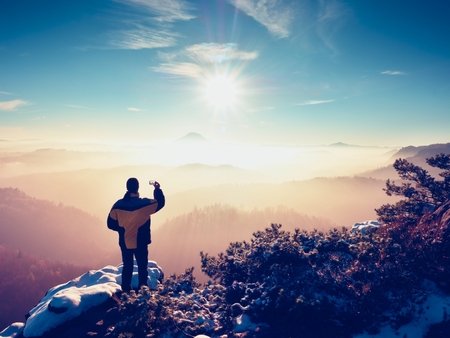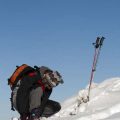1. Understanding Leave No Trace Principles
When exploring America’s breathtaking national parks and hiking trails, it’s crucial to protect these wild places for future generations. That’s where the Leave No Trace (LNT) principles come in. Leave No Trace is more than just a set of rules—it’s a way of thinking and acting that helps keep our natural spaces clean, safe, and beautiful.
What is Leave No Trace?
Leave No Trace is a set of seven core principles designed to guide outdoor enthusiasts on how to minimize their impact on the environment. These guidelines were developed by the Leave No Trace Center for Outdoor Ethics and are widely recognized across the United States. They’re especially important at popular destinations like Yosemite, Yellowstone, the Appalachian Trail, and local favorites like Mount Rainier or Grand Canyon.
The Seven Principles of Leave No Trace
| Principle | Description |
|---|---|
| Plan Ahead and Prepare | Research your destination, pack properly, and know the regulations before you go. |
| Travel and Camp on Durable Surfaces | Stick to established trails and campsites to avoid damaging fragile ecosystems. |
| Dispose of Waste Properly | Pack out all trash—including food scraps—and use designated bathrooms or dig cat holes for human waste. |
| Leave What You Find | Don’t pick flowers, move rocks, or disturb cultural or historical artifacts. |
| Minimize Campfire Impact | Use camp stoves instead of fires whenever possible; if you must build a fire, do so in established rings and burn only small sticks found on the ground. |
| Respect Wildlife | Observe animals from a distance and never feed them; store food securely to avoid attracting wildlife. |
| Be Considerate of Other Visitors | Keep noise levels down, yield the trail to others, and respect everyone’s outdoor experience. |
Why Do These Principles Matter?
The popularity of hiking in America means more people are heading outdoors than ever before. Without responsible behavior, our most loved trails can quickly become littered, eroded, or damaged. By following Leave No Trace principles, we help preserve these landscapes—so everyone can enjoy them now and in the future.
2. Preparing for Your Hike the Right Way
Start with Smart Trip Planning
Before you hit the trail, a little planning goes a long way in protecting America’s wild places. Pick a trail that matches your group’s abilities and be sure to check if permits or reservations are needed—some of the country’s most popular spots like Yosemite, Zion, and Grand Canyon require advance booking. Always let someone know your plans and expected return time.
Trip Planning Checklist
| Task | Why It Matters |
|---|---|
| Choose appropriate trails | Prevents overuse and crowding on fragile paths |
| Check permit and reservation requirements | Avoids fines and helps manage visitor impact |
| Review park alerts & weather forecasts | Keeps you safe and prepared for changing conditions |
| Inform someone about your trip plan | Essential for safety in remote areas |
Research Regulations and Trail Etiquette
America’s favorite hiking spots often have unique rules to help protect their natural beauty. Visit official websites or talk with rangers to learn about fire bans, camping zones, and pet policies. Stick to established trails to avoid trampling delicate plants. In many U.S. parks, hikers going uphill have the right of way—be ready to yield when needed.
Packing Responsibly to Minimize Your Impact
Packing smart is key to leaving no trace. Avoid single-use plastics by bringing reusable water bottles and containers. Use a lightweight stove instead of making campfires, which are often restricted or even banned. Pack out all trash, including food scraps, as even biodegradable waste can harm local wildlife.
| Packing Essentials | Sustainable Choices |
|---|---|
| Water & snacks | Reusable bottles, beeswax wraps instead of plastic bags |
| Trekking poles & footwear | Stick to durable options to reduce trail erosion |
| Navigation tools (map/GPS) | Offline maps minimize paper waste; charge devices beforehand |
| Waste bags (for trash & pet waste) | Packs out everything you bring in, keeping trails clean for everyone |
| Trowel (for digging cat holes) | Bury human waste 6-8 inches deep if there are no toilets available—follow local guidelines! |
Quick Tips Before You Go:
- Double-check trailhead parking rules—illegal parking damages vegetation and risks fines.
- If you’re hiking with kids or pets, review special rules ahead of time.
- Avoid introducing invasive species by cleaning your boots and gear before arrival.
Thoughtful preparation helps ensure America’s beloved hiking destinations remain wild and beautiful for generations to come.

3. Best Practices on the Trail
When hiking in America’s most popular destinations, following Leave No Trace principles isn’t just about preserving nature—it’s also about making the experience better for everyone. Here are some practical tips to help you stay responsible and respectful on the trail.
Stay on Marked Paths
Always stick to established trails, even if it’s tempting to take a shortcut or explore off the beaten path. Trails are designed to protect sensitive plants and wildlife habitats. Stepping off can cause erosion and damage fragile ecosystems. If a trail is muddy or wet, walk through it—not around it—to avoid widening the path.
Trail Etiquette Quick Guide
| Situation | What To Do |
|---|---|
| Passing Others | Yield to uphill hikers; step aside safely when letting others pass. |
| Biking on Trails | Bikers yield to hikers; always announce yourself when approaching from behind. |
| Hiking with Pets | Keep pets leashed and pick up after them. |
Respect Wildlife
Seeing wildlife is exciting, but remember: you’re a guest in their home. Watch animals from a distance—never feed or approach them. Human food can harm animals and make them dependent on handouts. Store snacks securely in your pack and keep noise levels down so you don’t disturb the natural environment.
Be Considerate of Other Hikers
The trail is a shared space, so be courteous to others:
- Keep your group small and voices low.
- Let faster hikers pass by stepping aside safely.
- If listening to music, use headphones instead of speakers.
- Packed-out trash includes snack wrappers, water bottles, and even biodegradable items like orange peels.
Packing Out Trash: What Stays vs. What Goes Home
| Item | Pack Out? | Description |
|---|---|---|
| Food Wrappers & Bottles | Yes | Takes years to break down; always carry out all packaging. |
| Fruit Peels & Cores | Yes | “Natural” litter attracts wildlife and doesn’t decompose quickly. |
| Toilet Paper & Hygiene Products | Yes | Bury waste properly (if allowed), but always pack out paper products. |
| Mud or Dirt on Boots/Clothes | No (Brush Off) | Shed excess dirt at trailheads, not on the trail itself. |
Tip:
A zip-top bag makes it easy to carry out your trash without mess or odor. Keeping America’s trails clean starts with every hiker doing their part!
4. Proper Waste Management in the Wild
Why Managing Waste Matters on American Trails
America’s most popular hiking destinations, like Yosemite, the Grand Canyon, and the Appalachian Trail, see millions of visitors each year. With so many people enjoying these natural wonders, it’s crucial to manage waste responsibly. Not only does this protect wildlife and water sources, but it also keeps trails beautiful for everyone.
How to Handle Trash: Pack It In, Pack It Out
The golden rule on U.S. trails is simple: if you brought it with you, take it back out. Leaving wrappers, bottles, or even tiny bits of trash behind damages the environment and ruins the experience for others. Here’s a quick guide:
| Item | What To Do |
|---|---|
| Snack wrappers | Pack out in a sealable bag |
| Bottles & cans | Carry back to recycling bins at trailheads |
| Tissues & wipes (even “biodegradable”) | Packed out with other trash—do not bury or burn |
| Micro-trash (crumbs, twist ties) | Double-check your area before leaving |
Dealing with Human Waste: Leave No Trace Restroom Etiquette
Popular parks often have restrooms near trailheads—always use them before you start your hike. If nature calls while you’re on the trail, follow these steps:
- Catholes: Dig a hole 6-8 inches deep and at least 200 feet from water sources and trails.
- Packing Out: In high-traffic areas or fragile environments (like canyons), use a portable toilet bag (“wag bag”) and pack out everything.
- Toilet Paper: Always pack it out in a sealed plastic bag—never bury or burn it.
Human Waste Disposal Options by Park Type
| Park Type | Recommended Method | Notes |
|---|---|---|
| High-traffic National Parks (e.g., Yosemite) |
Packing out with wag bags | Many parks require this; check local rules |
| Backcountry/Wilderness Areas | Catholes or packing out | Avoid water sources; follow Leave No Trace guidelines |
Food Scraps: Don’t Feed Wildlife!
Dropping even small bits of food can attract animals and disrupt their natural diet. Always pack out all food scraps, peels, and crumbs. Use a zip-top bag to collect every bit of food waste—even tiny crumbs count.
Pro Tip for Busy Trails:
If you see litter left behind by others, help out by picking it up! Many hikers carry a dedicated “trash bag” as part of their gear.
5. Protecting Sensitive Habitats and Cultural Sites
Why It Matters
America’s hiking trails often wind through areas that are not only beautiful but also ecologically fragile or historically significant. From alpine meadows in the Rockies to ancient petroglyphs in the Southwest, these places need special care to remain intact for future generations.
How to Avoid Disturbing Fragile Ecosystems
| Do | Don’t |
|---|---|
| Stay on marked trails, even if they’re muddy or crowded | Take shortcuts or create new paths |
| Respect all posted signs and barriers | Step over fences or ignore “Restoration Area” signs |
| Observe wildlife from a distance with binoculars or cameras | Chase, feed, or try to touch animals |
| Follow seasonal trail closures meant to protect breeding or regrowth periods | Ignore closures for personal convenience |
Respecting Historic Landmarks and Indigenous Sites
- Leave what you find: Don’t remove rocks, artifacts, or plants—even small souvenirs can damage fragile sites.
- No graffiti: Never carve into rocks, trees, or historic structures. This is illegal and disrespectful.
- Honor tribal lands: Many trails cross Native American territories. Always follow posted rules and local customs, which might include restrictions on photography or access.
- Avoid climbing on ruins: Structures like cliff dwellings or old cabins can be unstable and are easily damaged by foot traffic.
Quick Tips for Hikers in Popular U.S. Destinations
| Region | Sensitive Habitat/Cultural Site Example | Local Practice/Regulation |
|---|---|---|
| Pacific Northwest (e.g., Olympic National Park) | Mossy forests, tidal pools, tribal heritage sites | Stay on boardwalks; observe tide pool etiquette; follow tribal land guidelines posted at trailheads |
| Southwest (e.g., Sedona, AZ) | Cryptobiotic soil crusts, petroglyphs, sacred sites | Avoid stepping on soil crust; do not photograph certain sacred areas; stick to designated paths near rock art |
| Northeast (e.g., Appalachian Trail) | Bog habitats, historic shelters and monuments | Use boardwalks over wetlands; don’t disturb shelter foundations; read informational plaques for context and rules |
| Sierra Nevada (e.g., Yosemite) | Alpine meadows, sequoia groves, historical landmarks | Avoid trampling wildflowers; stay behind fences in sequoia groves; respect signage around historic buildings and bridges |
Your Role as a Steward of the Outdoors
Following these local practices isn’t just about following rules—it’s about honoring the landscapes and cultures that make America’s hiking destinations so special. Every hiker has a part to play in protecting these treasures for everyone who comes after.


